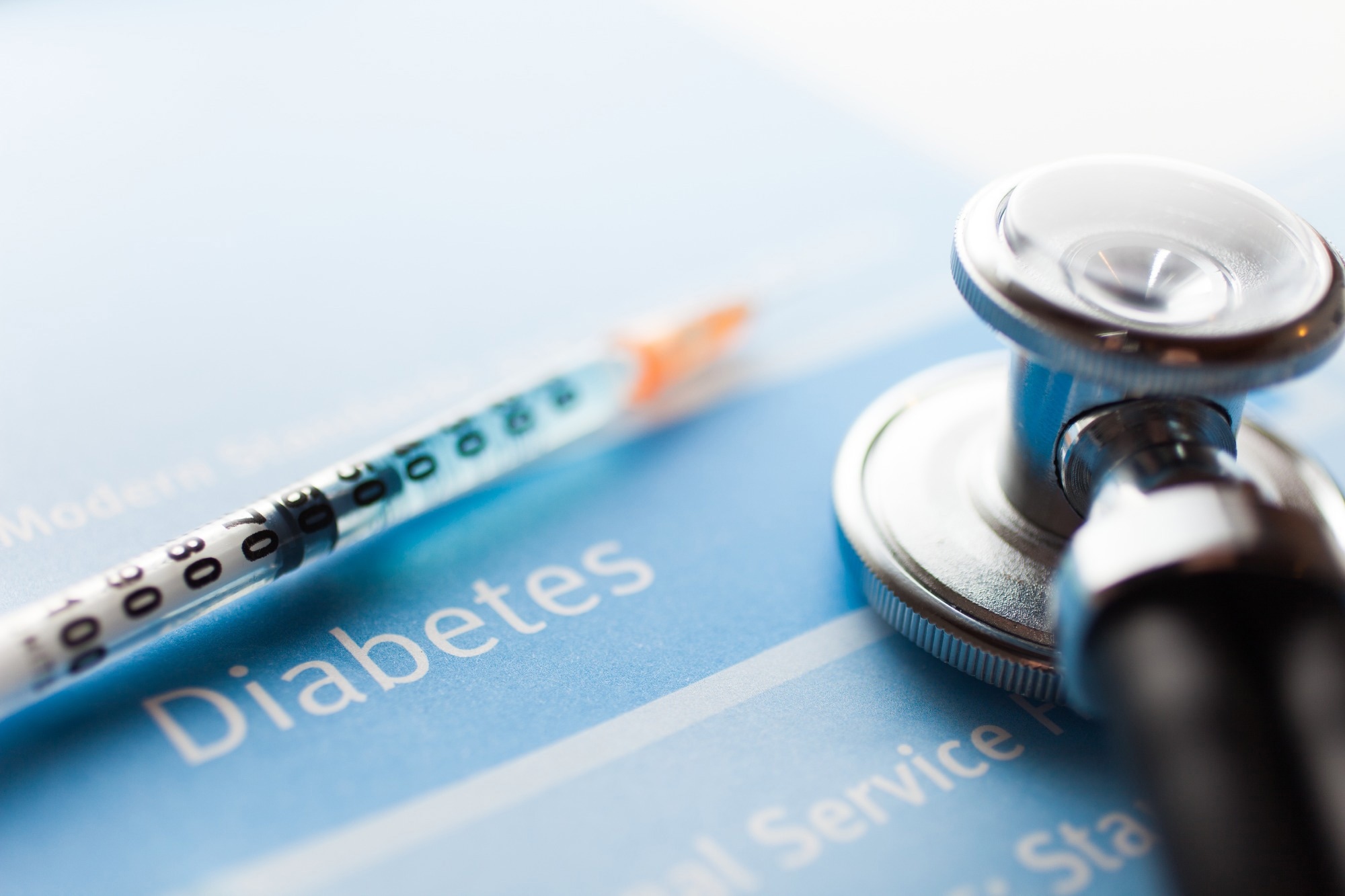In a recently published study in the International Journal of Environmental Research and Public Health, Researchers assessed the incidence and predictors of new-onset diabetes (NOD) in patients hospitalized with coronavirus disease 2019 (COVID-19).
background
Despite the measures introduced to prevent and treat COVID-19, such as vaccines, antivirals and monoclonal antibodies, the need for medical care and hospitalization remains high.
Numerous studies have reported that patients with severe COVID-19 have underlying comorbidities such as cardiovascular disease, obesity or hypertension. Reports suggest increased morbidity and mortality rates in COVID-19 patients with type 2 diabetes mellitus (T2DM) than in those without T2DM, suggesting that this may be an unfavorable prognostic factor.
About the study
The present study examined the incidence and predictors of NOD in COVID-19 patients. It was performed on patients admitted to a Romanian hospital from November 10, 2020 to January 31, 2021. Patients 18 years and older with any COVID-19 severity were included. Pregnant and diabetic patients, patients hospitalized for less than two days, and those with missing biological samples were excluded from the study.
NOD diagnosis during hospitalization was assessed using criteria established by the American Diabetes Association. Mild disease was defined as clinical symptoms without abnormal radiological findings. Patients with pneumonia observed on a chest computed tomography (CT) scan were classified as having moderate disease.
Severe COVID-19 patients had shortness of breath with a respiratory rate ≥ 30/minute, peripheral oxygen saturation (SpO2) of ≤ 93% and ratio of arterial partial pressure of oxygen to fractional inspired oxygen (P/F) ≤ 300 mmHg. Critical patients were patients with respiratory failure, multisystem organ failure, sepsis, or patients requiring mechanical ventilation/intensive care unit (ICU).
Laboratory tests were routinely performed; These included a complete blood count, D-dimer, C-reactive protein (CRP), lactate dehydrogenase (LDH), alanine aminotransferase (ALAT), triglycerides, arterial blood gases (ABG), aspartate aminotransferase (ASAT), creatinine, procalcitonin, and Interleukin (IL)-6. Samples were collected from the day of hospitalization until discharge.
Results
Of the 514 patients screened, 219 were included in the analysis. NOD was diagnosed in 58 subjects (26.5%) during hospitalization. The mean age of the patients was 69 and most were males. Loss of taste and dyspnea were common in patients with NOD. Notably, subjects with NOD frequently developed severe COVID-19 and required ICU care, with a longer median length of hospital stay (12.5 days) than subjects without NOD (nine days).
There were no statistically significant differences in the time from symptom onset to hospitalization and use of corticosteroid therapy between patients with and without NOD. The incidence of NOD was higher in those who were admitted to the ICU (43.3%) than those who were not (23.8%). The incidence of NOD increased with disease severity – 3.3% in patients with mild disease and 33.8% in patients with severe COVID-19 disease.
On admission, ferritin, fasting plasma glucose (FPG), and LDH were significantly elevated in NOD patients. Although hypoxemia was pronounced in NOD patients, it did not reach statistical significance. The peak values of biochemical tests (FPG, LDH, CRP, ferritin, triglycerides) were significantly increased in NOD patients.
Univariate logistic regression revealed a significant association between COVID-19 severity, FPG and LDH uptake levels, peak neutrophil and leukocyte counts, CRP, and ICU care for NOD during the hospital stay.
A lower odds ratio (OR) was observed for the uptake P/F ratio and the peak levels of IL-6. A multivariable regression analysis was performed with variables that were significant in the univariate analysis.
Overall, the entire regression model significantly predicted NOD during hospitalization. However, only one variable (LDH at admission) contributed significantly to the model. LDH levels of 657 units/liter at admission significantly predicted NOD during the hospital stay with a sensitivity and specificity of 52.7% and 73.6%, respectively.
Results
The study found that one in four COVID-19 patients had NOD while hospitalized. NOD incidence increased with the severity of COVID-19 and was higher in patients requiring critical care. Univariate analysis showed that the NOD group had a 2.7-fold increased risk of severe COVID-19. The multivariable analysis found that only admission LDH levels significantly predicted NOD during hospitalization, consistent with the results of a meta-analysis that found a correlation between diabetes and LDH levels in COVID-19 patients.
In summary, the researchers observed a high incidence of NOD in patients hospitalized with COVID-19, with LDH being the significant predictor of NOD at admission. The authors suggested interpreting the results with caution as the persistence of NOD after COVID-19 remains unknown. Due to the retrospective nature of the study, some methodological disadvantages may have arisen. Therefore, prospective studies must examine the persistence of NOD and the relevance of the tested biomarkers.
#predictors #onset #diabetes #hospitalized #COVID19 #patients


Leave a Comment